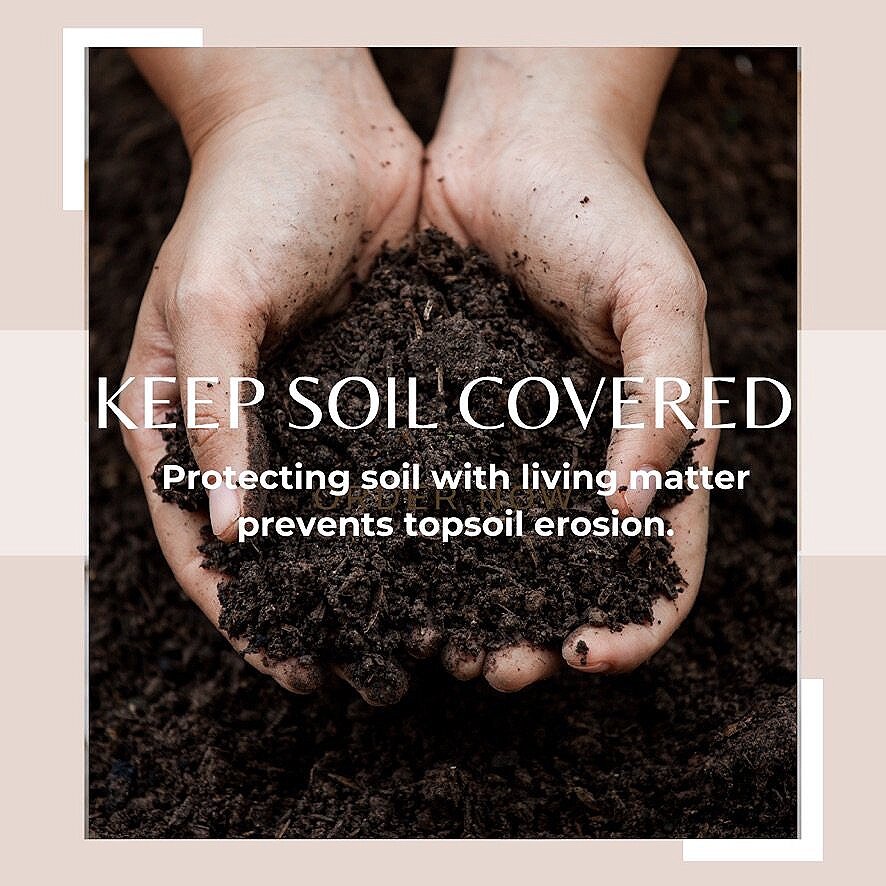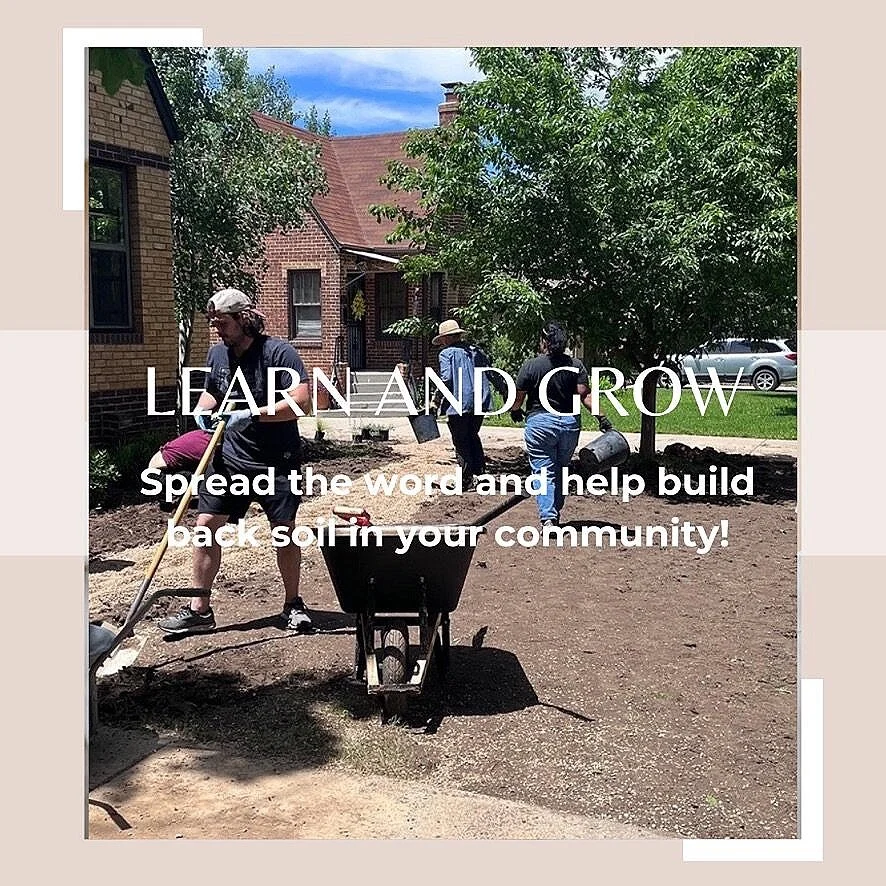Building Healthy Soil in Your Own Back Yard
Soil health is a top priority in climate mitigation, food security, and ecological resilience. Saving our soils is critical. We’ve lost over 57 billion tons of topsoil in the Midwest alone due to industrial farming practices. We can make an impact in our cities and suburbs through regeneration and rebuilding the backbone of life sustaining us all.
Follow these practical steps to building healthy soil in your own landscape:
Keep your soil covered with organic living matter. Exposed soil releases CO2 into the atmosphere. Soil protected with plant life sequesters carbon and prevents topsoil erosion and run off. Landscape fabric, artificial turf, and rocks don’t count!
Native plants grow deep root systems, holding soil in place while feeding microbial activity. More soil microorganisms = more nutrient rich soil. Native plant root systems prevent soil erosion and promote water holding capacity.
Native plant diversity increases pollinator habitat and supports food webs. Most native bees are solitary and nest in the ground. No healthy soil = no native bees. Without pollinators, soil loses its ability to provide plant life for pollinator habitat.
Leave your leaves in the winter garden to help retain soil moisture and nutrients. Wait until spring to cut back plant material. The dead plant material provides winter soil protection in addition to habitat and food for insects and birds. Use your leaves and plant material in the spring for making your own organic garden compost.
Chemical herbicides, pesticides, and fertilizers kill soil microbes and deplete soil nutrients. These chemicals decimate pollinator and bird populations and infiltrate our air and water.
Learn about why soil health matters and share with your community. Help your neighbors and friends grow regenerative landscapes and native gardens. Support your local native garden designers like Honeywood Garden Design.
Addtional Resources:
Honeywood Garden Design helps your create and build regenerative landscapes.








